Mini Cooper S Vs Mazda 3 Turbo Comparison: Little(ish) Bundles of Joy

Does practicality inevitably lead to compromising on driving dynamics?
While browsing through brochures you come across a Mini Cooper. You’re considering buying a hatch and it’s one of the few cars the heart instantly gravitates towards. But you remember you also have a family. Keeping that in mind your wife hands you the brochure (it’s just website links now) to the Mazda 3. It looks nice, quite practical, has enough power and according to reports drives quite well too. But then you also realize the Cooper now comes with four doors and is now a car worth considering. That burning confusion has inevitably led you here.
Get a Quote on a New Mazda3 or Mini Cooper SThe Mini Cooper S is an icon and an absolute hoot to drive while the Mazda 3, now with the Turbo motor pushing out 250 hp teeters on the edge of hot hatch territory. But do the two extra doors really make the Mini Cooper S that much more practical and do the Mazda 3 Turbo’s extra horses translate to a more engaging drive? it’s time for some answers.
Styling
Cooper S: The iconic grille has grown significantly over the years but from certain angles, it does look like it might have self-esteem issues. Thankfully though, the bright blue paint, the contrasting white roof, and racing stripes invigorate the aesthetic with some much-needed color. Both literally and figuratively.
Admittedly, the Mini isn’t so mini anymore. Apart from growing as a carmaker with numerous models in its lineup, the British (German) marquee’s flagship hatch now comes with four doors. While it wouldn’t be Charlie Croker’s first choice for the iconic heist, it will now appeal to a larger audience. Plus, the retro styling is as timeless as ever.
The rounded wing mirrors finished in white contrast the blue quite nicely. Headlamps are reminiscent of the first generation of the modern Mini and carry over the familiarity. And the Mini is about the only carmaker that can get away with placing the Union Jack in its tail lamps.
Mazda 3 Turbo: Looks a lot sleeker and contemporary compared to its rival here. The Mazda 3 is one of the best-looking hatches in the market and it’s all thanks to its proportions. A long bonnet leads into an acutely angled windshield which tapers off into a coupe-like roofline.
SEE ALSO: Mazda CX-30 vs Mercedes-Benz GLA Comparison: Lofty AspirationsA high-raked rear windscreen and a stubby tail complete the aesthetic making the Mazda look lith and athletic. Plus, the clean and sleek headlamps along with the twin tail lamp set up give it a sporty appearance like no other.
Bottom Line: It’s a subjective matter, but we prefer the retro-styled icon over its contemporary rival.
Cabin and Space
Cooper S: It’s even more retro on the inside than it is on the out. The steering is like the one you would find on sportier BMWs and a tad too thick for my taste. But the instrument cluster has a rather unconventional digital-analog setup. The elliptical cluster is one single screen with an analog needle in the tacho while the digits are part of the screen and the speedo is digital as well. Lastly, the whole setup moved with the tilt and telescopic adjustment so that it isn’t obscured by the steering.
It’s neither the absurdly round center dash nor its surrounding color-changing LEDs that strike your fancy but the retro-style toggle buttons. In an age where everything is touch operated, the retro toggle switches, while clearly, a novelty are a breath of fresh air. Everything from the sunroof to the traction control and even the overhead lamps are all toggle switch operated. Even the engine start/stop is a toggle switch.
Also, the whole thing is adamantly manual. While I agree, retro is the theme here but electric adjustment for the seats would have passed the scrutiny. Despite growing considerably, for a Mini, with just 51.2 inches (1,300 mm) of shoulder room, the cabin is rather snug. You sit low to the ground as you would expect and the squab extensions aid comfort. Despite the snug cabin a squared-off roof and a panoramic sunroof help with the feeling of space.
Unfortunately, the same cannot be said about the rear legroom for it is tight. With just 32.3 inches (1,654 mm) available in the second row and a high tunnel, it is impossible to seat three in the back, even for short stints. I wasn’t uncomfortable behind my seating position but it would get bothersome on long drives. Seatbacks though are supportive and headroom is adequate. The trunk can swallow 13.1 cu-ft (370 liters) of luggage with the rear bench up which is ample space for a weekend getaway. It expands to a maximum of 40.7 cu-ft (1,151liters) with the rear bench down.
Mazda 3 Turbo: Where the Mini’s cabin is playful and retro, the Mazda’s is quite the opposite. No, not staid and boring but mature and contemporary. Mazda’s cabins play a prominent role in setting it apart as a premium automaker and the 3 Turbo is no exception. It’s difficult to get away with red interiors but Mazda has the recipe nailed down. That deep red hue is sporty and elegant at the same time and complements the black of the dash and door panels beautifully. It really does look like a cabin from a segment or two above, the only chink in its armor being the archaic infotainment system but more on that later.
The dash design too is quite opposite to that of the Mini. Sleekness and minimalism are the order of business here. The red-stitched leather upholstery flows flawlessly from A-pillar to A-pillar and everything in between is linear and soft to the touch. Only the air-con buttons reside on the dash while the center console houses the rest. And all knobs are shiny chrome and feature knurled finishes. Along with the elegance, comfort levels are also high. The driver gets an eight-way electrically adjustable perch unlike the Mini and a more spacious cabin also unlike the Mini.
While the front headroom is close to its rival, the Mazda scores serious points thanks to 35.1 inches (891 mm) of legroom at the rear bench. I can sit behind my own driving position which is a good sign. Though despite the extra width, there is limited space for three adults in the rear. Also, the headroom, at 36.5 inches (927 mm) is almost identical to the Mini’s but that’s the max figure. Mazda’s roofline slants towards the rear so anyone six feet or over will graze the roof liner if they place their head on the headrest. You also can’t remove the rear headrests without folding the seats.
SEE ALSO: 2021 Ford Bronco First Drive Review: The Real DealThe trunk offers 20 cu-ft (566 liters) of luggage storage, significantly more than the Mini but then it would, it is after all 17 inches (434 mm) longer and almost three inches wider. Given the extra length, the rear bench should be roomier but isn’t.
Bottom Line: While both the Mini and the Mazda are equally comfortable in the front, and not so comfortable for rear occupants, the electrically adjustable driver’s perch and a significantly larger trunk skews the category in its favor.
Powertrain and Driving Feel
Cooper S: Eager, is what Kyle calls it and is probably the best adjective to describe the Cooper S. Its 2.0-liter turbo four-pot pushes out 189 hp 207 lb-ft of peak torque. While the figures might seem middling at best, its throttle tuning and an immensely strong mid-range more than make up for the deficit against the Mazda. It is also roughly 500 lb lighter than the 3 and it makes the difference in how the two cars handle. The Cooper S is available with a manual transmission but the one we have here is hooked up to a seven-speed DCT which is faster but we recommend the manual for better engagement.
The suspension is stiff but not uncomfortable. You feel the road in your hindquarters and get used to the feeling quite quickly. Again, it’s not uncomfortable, just communicative. The bigger bumps though will make themselves heard and felt and the small-ish diameter wheels and 195 section tires (skinny by today’s standards) don’t help. So you do need to watch out for those while navigating through the city. It comes with a ‘Green’ mode as well but it’s best left unused. The Mini works well with momentum and the said mode robs it of that completely.
To truly enjoy it, you need to shift it into Sport which is denoted by–I’m not making this up–an 8-bit go-kart. If Kyle and I had a nickel for every time we called it a go-kart, we would have enough for a fancy meal at Michelin Star restaurant. The EPS is direct enough to feel like a hydraulic setup. It is also impeccably communicative. Add a responsive transmission and progressive brakes along with the impeccable suspension and steering setup and you end up with corner-carving abilities few can match.
The setup comes together brilliantly when you’re grazing the apex looking for the perfect exit. There might be a power deficit but you can use all of it, every single time. Sometimes it’s hard to believe that you’re at the helm of a front-wheel-drive car. Tossing into corners without losing momentum is the most fun game you will play with the Cooper S. You need to get the braking and angle of entry just right to have enough momentum on the exit. And if you get it wrong you want to turn right back around and do it again while your passengers groan you were supposed to stop for lunch an hour ago.
Mazda 3 Turbo: This is more of a cruiser compared to the Mini and on paper, seems to match the driving chops of its rival. But the reality is a tad different. It comes with the same 2.5-liter turbo motor as the CX-30. Kyle prefers it in the crossover which makes him sad. But I do prefer this to the CX. Power output is identical in both cars, 228 hp and 310 lb-ft of peak torque if you use regular fuel but the figure jumps to 250 hp and 320 lb-ft if you use 93 octane gas. Though the difference is significant, it doesn’t feel so. The Mazda is a lot more easygoing than the Mini.
It is absolutely fantastic in the city. All bumps and undulations are taken care of without a retort. The suspension is set up for balance so even if you do go around a corner quicker than you usually would, it doesn’t get bent out of shape. On the highway too it feels calm, composed, and quiet. While the Cooper tends to get quite noisy. The steering is light enough to be a breeze in the city and consistent enough to be predictable in the corners. But it lacks the focus and mid-corner confidence of the Mini which if you’ve tasted once is hard to shake off.
The six-speed transmission works well but the Cooper’s is quicker. Its gearing is also taller so while you need to shift less often, it also feels less engaging to drive. Don’t get me wrong, it handles itself quite well, even in the corners. The mid-corner stability is adequate, braking is progressive enough, and you can certainly power out of corners thanks to the extra grunt. Plus, the AWD provides added stability. But it feels, to quote Kyle “denser and provides freight-train power delivery” and hence feels a lot less lively than the Mini.
Bottom Line: The key difference between the two is that where the Cooper S is a corner carver with just about adequate city manners, the Mazda is a city car with just enough handling chops to not be disappointing. Also, the Mini feels much lighter on its feet and a lot more fun and that’s the one we would pick here.
Tech and Features
Cooper S: I mentioned the cool instrument cluster earlier in the story now for the uncool bit. The infotainment system on the Mini is honestly quite infuriating. It seems unnecessarily complicated and almost impossible to navigate. On the move it should be left alone. It also has an iDrive type controller but for some reason, the controls are exactly the opposite of ones on regular BMW cars. Why? Also, there is no Android Auto. I will admit the navigation does work rather well once you get it working and it connects to bluetooth in a jiffy but the lack of AA is still a glaring omission. Speaking of, there is no blind spot detection either. Thankfully, the visibility is quite good. But you still need to keep your peripheral vision peeled.
Also, you get a wireless charger in the armrest but any phone with screen larger than six inches struggles to fit as Kyle found out. He ended up in a lengthy conversation with a 911 operator and also considers the rather large fuel gauge “as helpful as a text-to-Simlish feature.” While it feels a tad gimmicky, I quite like the glass HUD. It defies tradition and looks like the one you’d find on fighter jets.
Mazda 3 Turbo: Where the Cooper’s infotainment is complicated but modern, the Mazda’s feels archaic. There is no touchscreen interface here. While it supports Android Auto, the display quality is at least two generations old.
Kyle puts it aptly “Mazda’s infotainment approach is honorable (touchscreens are more distracting), but the execution leaves something to be desired. Not the quickest, and can’t display multiple bits of information at once. And a touchscreen should still exist for passengers.”
He also prefers the HUD of the Mazda to the Mini’s. But we both agree that the instrument cluster is a clever piece of kit. An analog tacho couples with a speedo that can pass off as analog too but is actually a screen. It looks elegant and yet displays all the information you might need, smart. It also comes with blind-spot detection as standard on the turbo models.
Bottom Line: In terms of the infotainment system both tend to cancel each other out. The Mini’s is complicated but offers a crisp display and a good native navigation system but there is no Android Auto. Mazda comes with Android Auto but the display is archaic and there is no touchscreen. Mini however loses points due to the lack of blind spot detection while Mazda scores for offering it as standard.
Pricing
Cooper S: The Mini Cooper S starts from $31,000 including destination for the base Classic trim. It comes with a six-speed manual transmission as standard. For $4,000 more you can upgrade to the Signature trim that fetches you the DCT. You do however, get adaptive cruise control, auto emergency braking and lane departure warning as standard. Everything including the 8.8-inch touchscreen with iDrive style scroller, and the LED lighting ring are all part of the standard package. Ironically, Apple CarPlay is only available with the top Iconic trim that adds $8,000 to the price. It also includes HUD, premium leather upholstery and a Harman Kardon sound system. The one we have here will tip the scale at $37,600 including destination. But you can cherry pick the options you want in your Cooper S and the white stripes are extra regardless of the trim you choose
In Canada, you can have the Mini in two trims, Premier and Premier+. The Premier starts from $38,035 while the one we have here is the fully loaded Premier+ version and retails for $45,875.
Mazda 3 Turbo: Mazda offers the 3 Turbo in two trims in the US. Starting at $32,045, the Turbo is the most affordable Mazda 3 Turbo you can buy. And the affordable version fetches you everything from adaptive cruise control to blind-spot detection to the head-up display. Only exceptions are navigation, leather seats and upholstery, and traffic sign recognition which are available with the Premium Plus trim. The one we have here is the closest one to the latter and is priced at $35,665 including destination.
In Canada, you essentially only have one trim, the Mazda 3 Sport GT. It is the top trim in the 3’s lineup barring the 100 anniversary edition which only features visual upgrades. The one we have here is the fully loaded GT trim which retails for $37,550 CAD including destination.
Bottom Line: The Mini not only undercuts the Mazda but also offers most assistance features like adaptive cruise control and emergency braking as standard at a lower price point. Yes. it gets expensive as you pile on the options but you can have those driving dynamics with a manual transmission for a $1,000 less. Honestly, that’s a steal. The Mini wins.
Verdict: Mini Cooper S vs Mazda 3 Turbo Comparison
As I said earlier, you can have the Cooper S with that engine and driving dynamics for $31,000. Adding the DCT adds $1,750 to the price which is rather good value for something like the Cooper S.
Many will frown on the power deficit, but if power was the only thing that counted, the Miata would never be considered one of the greats. And that is the biggest advantage of the Mini, you don’t need big power to enjoy it. Yes, the Mazda is the more powerful and practical choice. But the rear bench is as usable in the Mini as it is in the Mazda. The bigger trunk is the only real advantage. Plus, you can customize the Mini with individual options unlike the Mazda. Even a lower specced Cooper S will be as fun as the top spec. You would never wake up on a Sunday morning craving for a drive in your Mazda 3. But you would for the Cooper S and it’s just practical enough to be a decent daily driver and adequate enough for a small family. And hence we have a winner.
Become an AutoGuide insider. Get the latest from the automotive world first by subscribing to our newsletter here.

More by Kshitij Sharma



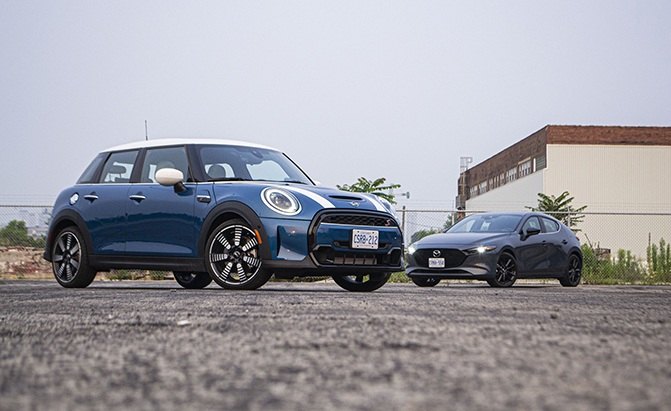
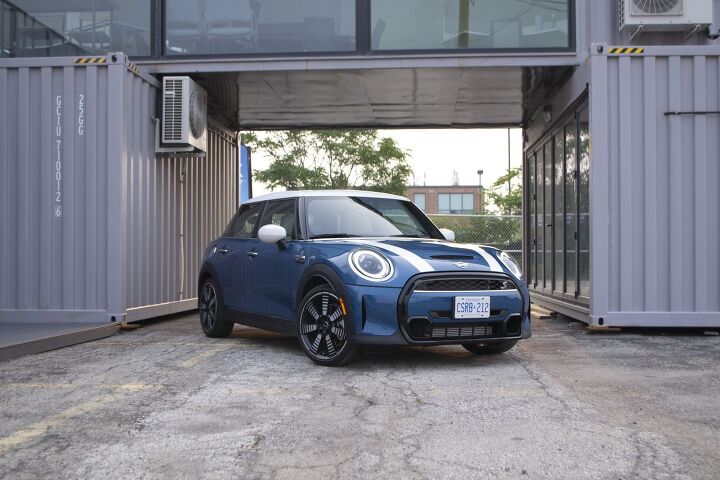





































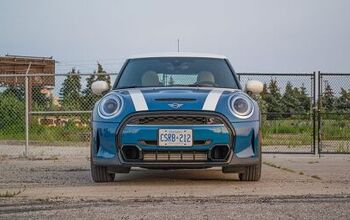
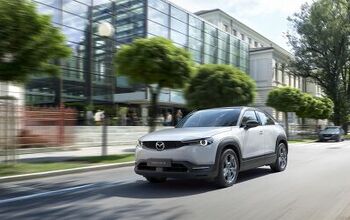
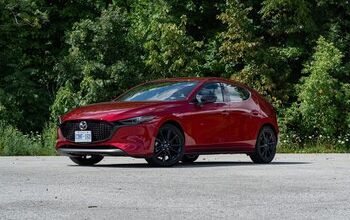
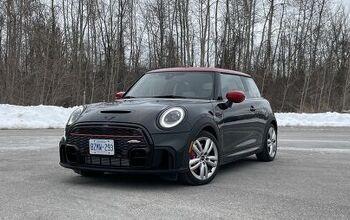
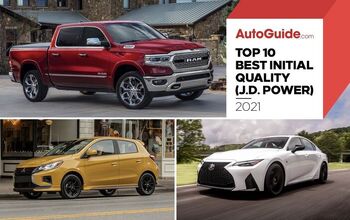

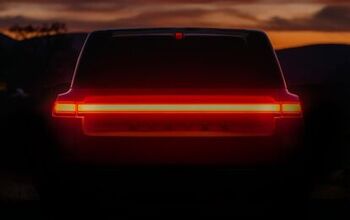

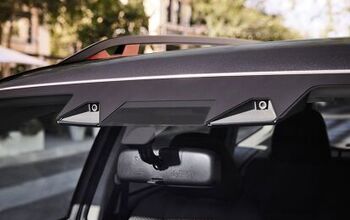
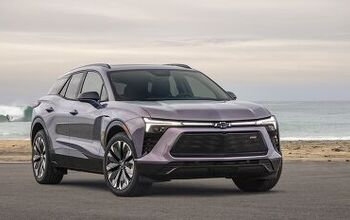
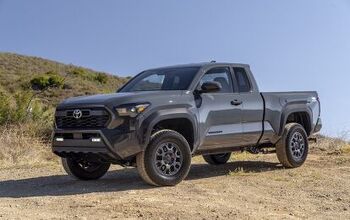

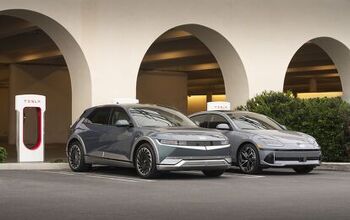


Comments
Join the conversation